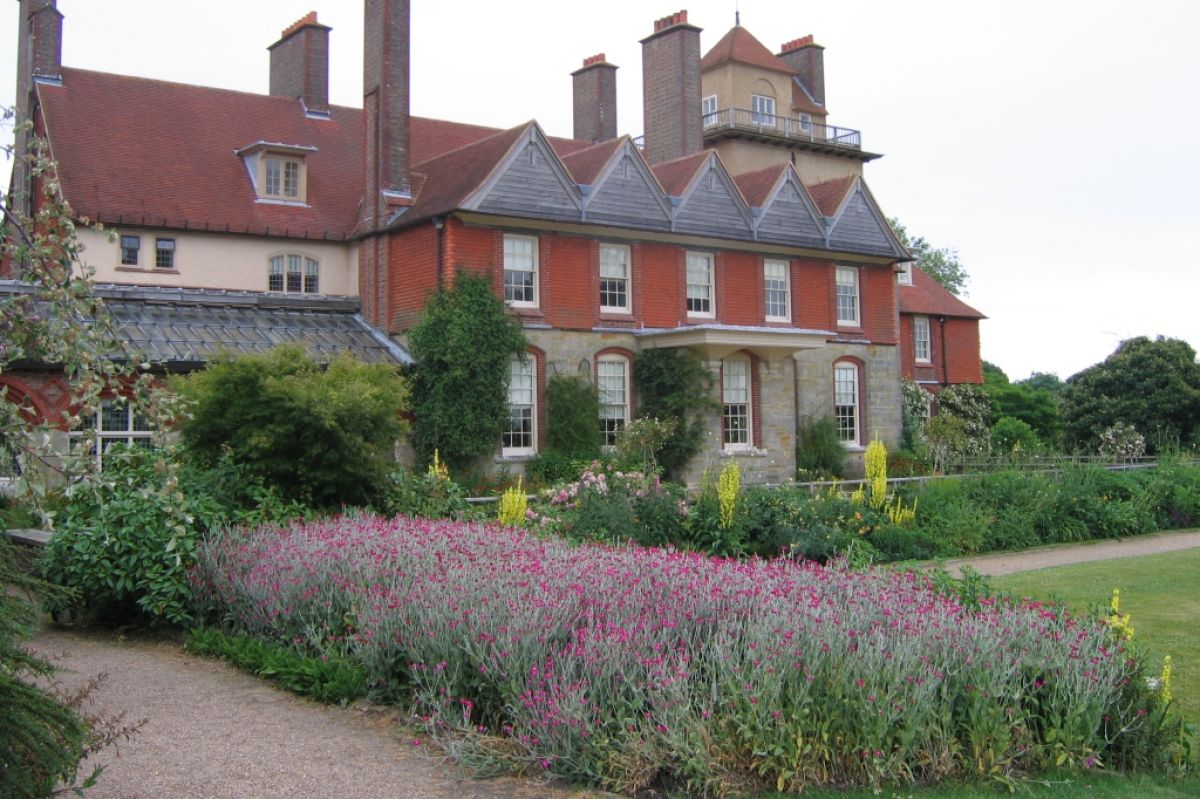English country gardens were described by Mary Russell Mitford as, "walls covered with hollyhocks, roses, and honeysuckles....and beds full of tulips, pinks, larkspurs, peonies, stocks, and carnations." Country gardens always seemed to have a mix of creatures, too, with plants that were both useful and beautiful.
The writer Thomas Hardy was born in a thatched cottage built by his grandfather in the Dorset countryside. That garden was a mix of geese, pigs, and hens, amid both vegetables and flowers.
Beatrix Potter's garden at Hilltop in the Lake District of England was a lovely example of a mingling of edibles (fruit trees and vegetables) and a cheerful progression of flowers from spring through fall. From its signature long path through the garden, visitors admired foxgloves and Verbascum, moss roses and currants, and red carnations and strawberries, winningly interspersed.
In the late 18th century, William Morris, a prominent advocate of the Arts and Crafts movement, wanted all of England to become a garden where nothing was wasted. But the Industrial Revolution forced people to move nearer to factories, where workers lived in cramped flats. While Morris and his Arts and Crafts contemporaries had visions of "Paradise on Earth," food was the pressing need for lower income people. So only those with means, like Morris, planted pleasure gardens.
This is Moya Andrews, and today we focused on country gardens.










